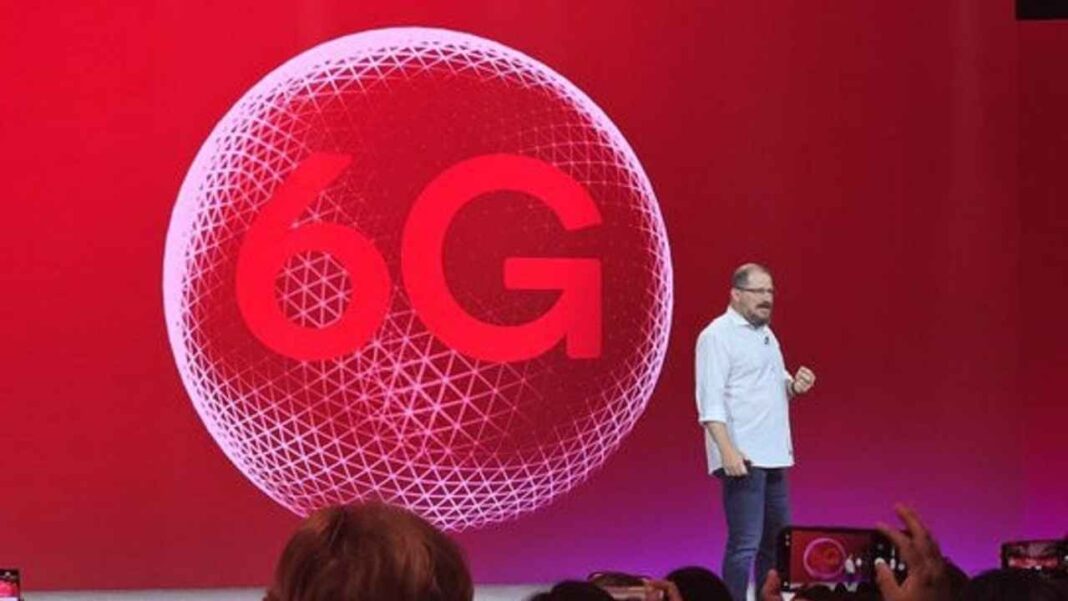Qualcomm 6G: People are already talking more and more about 6G, the next generation of 5G technology, even though 5G is still being used. Qualcomm, one of the best chipmakers and wireless innovators in the world, is leading these talks. Qualcomm recently said that pre-commercial 6G devices could be available as early as 2028. This would be the start of another revolution in connectivity.
But what does 6G really promise, and what are the problems with it? Let’s look at Qualcomm’s vision for 6G, the pros and cons of this new wireless technology, and the chances it gives us.
What does 6G mean?
6G, or the sixth generation of wireless networks, is expected to be better than 5G because it will have ultra-low latency, faster speeds, and more ways to connect. 5G has already made things like IoT expansion, smart factories, self-driving cars, and better mobile streaming possible. 6G wants to go even further.
Qualcomm says that 6G will use AI, cloud computing, edge processing, and advanced spectrum utilization to provide smooth and smart connectivity. This will not only make the internet faster, but it will also change how people and machines talk to each other.
Qualcomm’s Plan for 6G
Qualcomm thinks that 6G will be more than just an improvement on 5G; it will change the way people communicate wirelessly. Some of the most important parts of their roadmap are:
• Timeline: Devices that are not yet for sale are likely to come out around 2028, and more people will start using them in the early 2030s.
• Use of Spectrum: 6G will depend a lot on terahertz frequencies (above 100 GHz) to get very high data rates.
• AI-Driven Networks: AI will be a big part of network management, making connections better in real time.
• Bringing Together the Real and the Virtual: Qualcomm thinks that 6G will make metaverse-like experiences, extended reality (XR), and immersive holograms available to everyone.
• Industrial Uses: 6G will be very important for self-driving cars, smart cities, and next-generation healthcare systems, in addition to consumer devices.
What 6G is all about and why it’s good
1. Blazing Speeds: 5G already offers gigabit speeds, but 6G could offer speeds up to 100 times faster, allowing for instant downloads of multi-terabyte files and streaming of ultra-high-definition video.
2. Very Low Latency: Latency can drop to just microseconds, which makes real-time communication possible for things like self-driving cars, robotic surgery, and VR/AR.
3. AI-Native Networks: 6G will have AI built in to help with predictive optimization, smart traffic management, and better security.
4. Advanced Connectivity: It will support huge IoT deployments, where billions of devices and sensors can talk to each other without any problems.
5. Immersive Experiences: Holographic video calls and lifelike virtual reality are just two examples of the kinds of experiences that 6G will make possible that seem like science fiction today.
Pros of 6G:
• Unmatched data speeds—data transfers happen right away, and mobile experiences are better.
• Smarter Networks: AI-powered systems will take care of themselves, which will cut down on network failures and make things run more smoothly.
• A better IoT ecosystem that will support smart homes, cities, and industries on a scale never seen before.
• Boost to Innovation—makes things like self-driving cars, AI-powered healthcare, and immersive entertainment possible.
• Global Productivity: Better connectivity will create new business opportunities in all sectors.
Cons of 6G:
• Infrastructure Costs: To roll out 6G, huge amounts of money will need to be spent on spectrum, towers, and devices.
• Energy Demands: Higher frequencies and always-on connectivity could use more energy, which is bad for the environment.
• Risks to Privacy and Security: AI-driven, hyper-connected networks could make cyberattacks more advanced and harmful.
• Digital Divide: Countries and regions that are slow to adopt 5G may fall even further behind in getting the benefits of 6G.
• Health and Spectrum Issues – Terahertz frequencies may not be harmful according to science, but the public may be skeptical and there may be regulatory issues.
The Path to 2028 and Beyond
Even though 2028 may seem like a long way off, Qualcomm and other industry leaders are already working on 6G research, standardization, and trials. Just like it took almost ten years for 5G to become widely available, it will take years for governments, telecom companies, and tech giants to work together to make 6G.
The good news is that the 6G transition will go more smoothly because of what we learned from the 5G rollout, such as how to share infrastructure and manage spectrum. But accessibility and cost will still be big problems.
Final Thoughts
Qualcomm’s prediction that 6G will be available by 2028 is more than just a bold statement; it’s a look ahead to the next era of global connectivity. 6G has the potential to change economies, lifestyles, and industries in ways that are currently unimaginable thanks to its promises of unprecedented speed, extremely low latency, and AI-native capabilities.
But there are also problems, such as cost, energy needs, security, and access. For 6G to be a real success, it needs to be innovative, sustainable, and open to everyone. One thing is clear as 2028 gets closer: 6G will completely change how people around the world connect, talk to each other, and work together.

